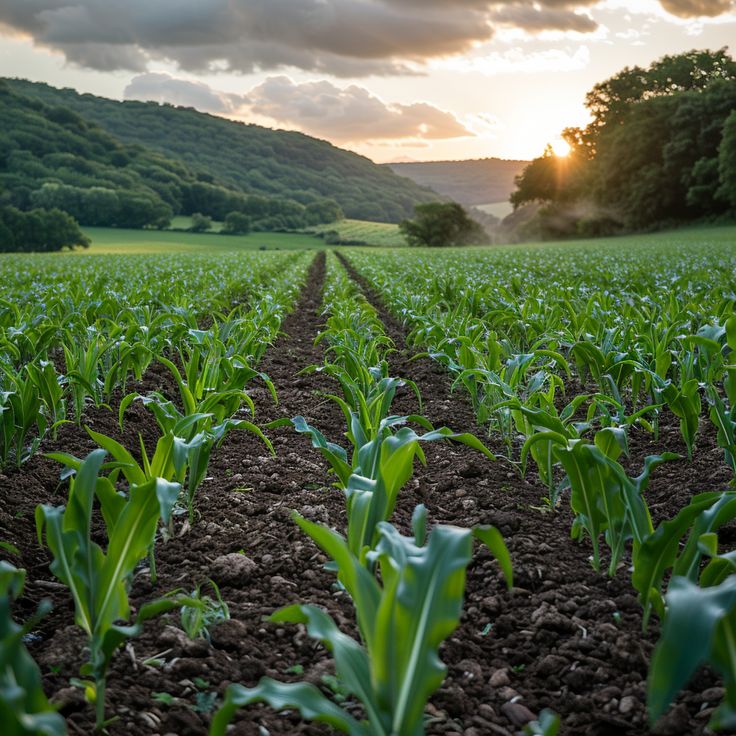The Rise of Connected Farming: Ushering in a New Era of Data-Driven Agriculture
Connected Farming In an ever-evolving agricultural landscape, the pressure to produce more, conserve resources, and operate sustainably is constant. Smart agriculture, with its diverse technologies and data-driven approach, has emerged as a powerful tool to address these challenges. However, the true potential of these technologies lies in their interconnectedness, paving the way for a more holistic and efficient approach – the connected farming system.
Connecting the Dots: What is a Connected Farming System?
A connected farming system is a network of integrated technologies and software that collect, analyze, and share real-time data across different aspects of a farm operation. This interconnected ecosystem encompasses various components:
- Sensors: These devices gather data on various parameters like soil moisture, air temperature, pest infestations, and crop health.
- Data communication: Wireless networks, including Wi-Fi, cellular connectivity, and low-power wide-area networks (LPWANs), ensure seamless data transmission between sensors and the central hub.
- Data management platforms: These platforms aggregate raw data from sensors, perform analysis, and provide user-friendly dashboards for visualization and decision-making.
- Automation tools: Based on real-time data insights, automated irrigation systems, precision application of fertilizers and pesticides, and environmental control systems can be employed.
- Decision support tools: Advanced analytics and machine learning algorithms can help predict crop yields, optimize resource use, and identify potential problems before they escalate.
Benefits of Connected Farming Systems
Connected farming systems offer a multitude of benefits for farmers, including:
1. Enhanced Efficiency and Productivity: Access to real-time data allows for targeted interventions, optimizing resource allocation and minimizing waste. Precise irrigation scheduling reduces water usage, while automated fertilizer and pesticide application minimizes over-application, leading to cost savings and environmental benefits.
2. Improved Crop Quality and Yield: By monitoring key environmental factors and proactively addressing potential threats, connected systems can help maintain optimal growing conditions, ultimately leading to improved crop quality and increased yields.
3. Data-Driven Decision Making: Farmers can move beyond intuition and experience-based practices and leverage data-driven insights for informed decision making. This can involve optimizing planting schedules, selecting appropriate crop varieties, and responding to weather events more effectively.
4. Sustainability and Environment Protection: Connected systems enable precision agriculture, minimizing resource waste and environmental impact. Optimized water usage, targeted application of inputs, and real-time monitoring of soil health all contribute to more sustainable farming practices.
5. Improved Farm Management and Labor Optimization: By automating tasks and providing centralized data platforms, connected systems can simplify farm management and improve labor efficiency. Farmers can manage resources from a single platform, freeing up valuable time for strategic planning and other crucial activities.
Challenges and Considerations for Implementing Connected Farming Systems
While the benefits are undeniable, implementing connected farming systems requires careful consideration of several challenges:
1. Initial Investment Cost: The cost of sensors, data platforms, and potential infrastructure upgrades can be a significant barrier for smaller farms. Government initiatives and industry partnerships can play a crucial role in making these technologies more accessible.
2. Technical Expertise and Digital Literacy: Farmers may require training and support to understand the technology, interpret data, and integrate it into their existing practices. Upskilling programs and user-friendly interfaces are essential for wider adoption.
3. Data Security and Privacy: Concerns regarding data security and privacy need to be addressed. Implementing robust cybersecurity measures and ensuring transparency in data collection and usage will be crucial for building trust among farmers.
4. Infrastructure Challenges: Access to reliable internet connectivity in remote areas can hinder the implementation and effectiveness of connected farming systems. Investing in rural infrastructure development alongside technology solutions is vital for bridging the digital divide.
The Future of Connected Farming: Collaboration and Continuous Innovation
The future of connected farming lies in collaboration and continuous innovation. Partnerships between technology providers, farmers, research institutions, and policymakers are essential to overcome the challenges and unlock the full potential of this transformative technology.
Continuous research and development will further refine existing technologies and introduce new solutions tailored to specific needs. As these systems become more sophisticated and accessible, the agricultural sector can expect to witness significant advancements in efficiency, sustainability, and overall productivity.
Conclusion
Connected farming systems represent a paradigm shift in agricultural practices, empowering farmers to make data-driven decisions, optimize resources, and navigate the complexities of the modern agricultural landscape. With continued collaboration, investment, and innovation, these interconnected systems hold the potential to revolutionize the agricultural sector, ensuring a more sustainable, efficient, and productive future for generations to come.




